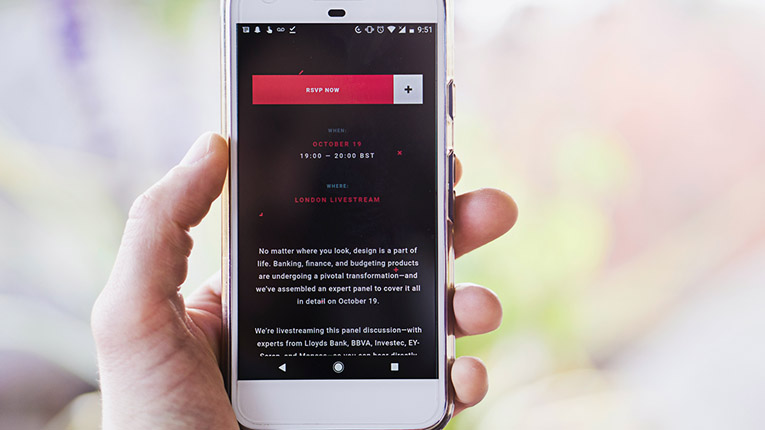How to create an excellent email newsletter


Posted: Thu 12th Nov 2020
Email marketing: Isn't it dead? Absolutely not. In its 2019 Year In Review, global tech company Campaign Monitor revealed an ROI of $42 for every dollar spent on email, which makes it more valuable than Instagram, Facebook and pretty much any other marketing channel.
We decided to create this timely how-to guide to email marketing to explain exactly why you should be using it as a key part of your small business marketing. Let's dive straight in…
Why is email so effective?
Well, here's the thing: it quite often isn't. Effectiveness depends on getting some pretty big basics right. Basics like being:
relevant
useful
inspiring
beautiful
Be these things, and email becomes a format that people look forward to receiving, as well as a place to tell your story on your own terms. What other marketing channel can say that?
Choosing an email marketing platform
There is a lot of choice. Tech Advisor's handy list of the top free email marketing services for small businesses is a great place to start, especially as it includes options with mobile-responsive templates, automation features, and third-party integrations.
TechRadar's Best email marketing software of 2020 list is also worth checking out. It names Mailchimp - the go-to platform for so many companies - as the best for growing businesses.
How to get people to subscribe to your newsletter
This really boils down to three things:
Knowing what you want your newsletter to achieve, then making a start.
Getting the basics right.
Promoting. As DO Lectures puts it, all roads should lead to newsletter sign-ups. Encourage people to sign up via your social channels and your website. With the latter, consider some kind of incentive.
How to design an email newsletter
The design of your newsletter will say things about your business that words can't. 'Premium product', for example, or 'Trusted source of help'. Typography, layout, photos - they should all reflect your business's values.
When you're designing an email on your computer, remember that 46% of all emails are opened on mobile. Fortunately, most email platforms allow you to preview in mobile view (send a test to your phone as well, though - see it as your customer sees it).
Deliverability and readability are therefore crucial. Avoid large images (the 600-pixel recommendation, which has been around for ages, remains a decent guideline), go easy on the graphics, and try to have a logical, user-friendly flow that gives readers easy access to your email's key elements.
How to decide what to include in your newsletter
Think about your audience. It's likely that every newsletter they receive in any given week will encourage them to buy something. And that gets pretty tiresome.
Your email will stand out if it includes content that's relevant, useful, inspiring and beautiful. Yep, it's those basics again.
It's all about the long term. Your subscribers will trust you if you consistently educate, inspire and engage them. They'll remember you. They'll look forward to hearing from you. And as a result, they'll be more likely to buy from you.
10 content ideas to consider
Conversational intros. You'll strike a relatable tone while encouraging people to read on
Useful and/or inspiring blog posts. Showcase your expertise. How-to guides always go down well
Listicles. Everyone likes a top 10 list. Have some fun
'Storify' new products
Exclusive subscriber discounts
Interviews with you or your team
Thought-provoking quotes (perhaps some funny ones, too)
Customer reviews or testimonials
Interesting, timely stats from your industry
PR coverage you've received
How to optimise your email newsletter
Have a point of view
To engage and influence your readers, you need to have a point of view. Don't think that pleasing everybody will attract a big following; instead, concentrate on resonating with a smaller community. You'll end up meaning something to them.
Be consistent
Send your newsletter at a particular time - and stick to it. Time-starved people like routine, not surprises. And remember - get the above basics right and your subscribers won't just expect your email to arrive, they'll look forward to it.
Be you
Be conversational. Write like you talk - or, as computer scientist and entrepreneur Paul Graham puts it, in spoken language. In fact, it's worth sharing his take on spoken versus written language:
"Written and spoken language are different. Does that make written language worse? If you want people to read and understand what you write, yes.
"Written language is more complex, which makes it more work to read. It's also more formal and distant, which gives the reader's attention permission to drift.
"But perhaps worst of all, the complex sentences and fancy words give you, the writer, the false impression that you're saying more than you actually are."
So, find your tone of voice - which isn't just the words you choose, but what you do with them. Maybe you veer towards writing funny, snappy sentences? Perhaps you're more inclined towards beautifully descriptive long-form sentences?
Write powerful subject lines
It's frustrating that subject lines are tricky to write because, for 35% of us, they're the sole factor behind us opening an email. There are, however, three golden rules:
Keep them short. Mailchimp recommends a maximum of 60 characters and nine words; Marketo says 41 characters and seven words is best.
Make them clickable. Spark some curiosity. Ask a question the reader wants the answer to. Include an offer.
Don't treat them as an afterthought. Remember how crucial they are to your emails being opened. Give them the time they deserve.
Test, test and test some more
The beauty of emails is that you can A/B test just about everything. Would it be better if they came from a person rather than the company name? Maybe an alliterative subject line would be more effective? Could you get more clicks by using a shorter intro? What if you sent it at 11am instead of 10?
Bonus tips
Take inspiration from other email newsletters before creating your own. Which ones do you like, and why?
See your subscribers as a community, not a database or list. Have conversations with them. Get their feedback.
Listen to unsubscribes. They're telling you something. Maybe you're emailing too often. Perhaps your content has become less relevant.
Be direct when you're selling. Don't try to hide the fact. Your potential customers are time poor. They will respect you being direct.
Your open rate is your key metric, not how many subscribers you have - purely because it tells you whether people are engaged.
A note on the law
Remember that you can only send marketing emails to people that have specifically consented, or customers who have bought from you in the past (provided you gave them the opportunity to opt out when you collected their details).
Every email you send must contain a legitimate contact address and the ability to unsubscribe.
If you use a database to store prospect or customer contact details, you must comply with GDPR.
Keen to improve your email marketing? Tech Hub can help you
Take a quick "diagnostic" survey and receive personalised recommendations of tools you can use to engage customers via email. Go to the Tech Hub now
Relevant resources


